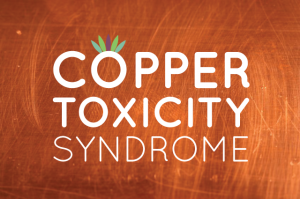Copper Toxicity and Health Issues
High levels of copper are toxic to the body and will alter other mineral patterns, while reducing the body’s ability to detox heavy metals. High copper levels result in a wide variety of altered biological functions and health challenges.
Why Is Copper Needed?
Copper is needed in the body and has important biological functions. But too much copper that is unbound becomes toxic and can result in the inability to produce energy, depletion of key minerals, the depletion of adequate adrenal, challenge immune system and decrease thryoid function.
Copper Toxicity and Hair Tissue Mineral Analysis (HTMA)
- Hidden copper toxicity occurs when high levels of copper are stored in various body tissues but have not yet been released to show up in the hair.
- Someone with copper toxicity can have either high copper showing up in the hair or may have low or hidden copper.
- Even when copper appears low in the hair test, we look for other key indicators such as of high unbound copper in tissues such as
- high calcium
- low potassium
- the Ca/K ratio over 10
- low molybdenum (<.003)
- low Na/K
- plus other levels and ratios to understand what is really happening with copper.
- A vitamin C deficiency is very common as the copper level goes too high. This impairs serotonin production which leads to insomnia.
- Even if a HTMA hair test graph shows a low copper level, implying that a person needs to consume more copper, that is not correct. This would only make the problem much worse.
- You must have a trained HTMA Practitioner who understands all of the the various HTMA markers to professionally guide you with nutrients and/or specific homeopathic remedies to balance the key issues shown in the hair test.
Health Issues Related to Copper Toxicity
Below are the common health issues, physical symptoms and diagnoses that are often related to copper toxicity.
- Aching muscles or muscle cramps
- Acne including cystic acne
- ADD or ADHD
- Adverse reaction to vitamins & minerals
- Anger or rage
- Autism Spectrum Disorders
- Anxiety
- Arthritis
- Bipolar Disorder
- Birth Control Use – IUD at any age
- Birth Control Use – Pill Use at any age
- Calcium bone spurs
- Cancer
- Chronic Fatigue Syndrome
- Chocolate cravings
- Cold hands, and/or feet
- Constipation
- Cysts
- Depression
- Despair, suicidal feelings, hopelessness
- Dry skin
- Eating disorders: anorexia, bulimia, overeating
- Endometriosis
- Fatigue and exhaustion
- Fibromyalgia
- Gum disease
- Gut dysbiosis
- Hashimoto’s Thyroiditis
- Headaches – including migraines
- Heart disease
- Heart palpitations
- Hormone Replacement Therapy
- Hypoglycemia
- Hypothyroid (slow thyroid function)
- Hyperthyroid (fast thryoid function)
- Infertility or difficulty conceiving
- Insomnia, interrupted sleep
- Low blood pressure
- Lyme Disease
- Mind is in a fog, brain fog
- Mind races
- Mood swings
- Mononucleosis
- Obsessive thoughts
- OCD – Obsessive Compulsive Disorder
- Oppositional Defiant Disorder (ODD)
- Osteoporosis
- Osteopenia
- PANDAS / PANS
- Panic attacks, free floating anxiety
- Paranoia
- Schizophrenia
- PMS – Premenstrual Syndrome including menstrual cramps
- Postpartum depression
- Problems with concentration and memory
- Racing heart, pounding heart
- Seizures
- Short attention span or “spaciness”
- Skin rashes
- Super sensitiveness, weeping
- Thyroid problems
- Tooth decay
- Yeast infection – candida
- Violent behavior
An Introduction To Copper Toxicity
(6:49 minutes)


